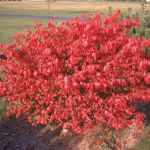| Common Name: |
Burning Bush |
| Other Names: |
Gas Plant, Dittany |
| Botanical Name: |
Dictamnus albus |
| Genus: |
Dictamnus |
| Family: |
Rutaceae |
| Cultivation: |
Well-drained, fertile, neutral to alkaline soil in sun or partial shade. |
| Propagation: |
By seed sown when ripe; by division in autumn or springm though plants are slow to re-establish. Does not transplant well. |
| Harvest: |
Bark is peeled from roots lifted in autumn and dried for use in decoctions. |
| Native Location: |
SW Europe to China and Korea |
| Height: |
40-80cm (16-32in) |
| Width: |
60cm (2ft) |
| Variations: |
Var. purpureus
Has pink flowers, striped in darker pink. More commonly seen in cultivation that the species.
Height: 40-80cm (16-32in)
Width: 24-45cm (10-18in). |
| Hardiness: |
Z2-9 |
| Parts Used: |
Root bark (bai xian pi). |
| Properties: |
A bitter, strong-smelling herb that lowers fever, stimulates the uterus, and controls bacterial and fungal infections. |
| Medicinal Uses: |
Internally and externally for skin diseases (especially scabies and eczema), German measles, arthritic pain, and jaundice. May be combined with Sophora flavescens (See, yellow pagoda tree) as an external wash. Contraindicated during pregnancy. For use by profession practioners only. |
| Warning: |
Skin irritant in sunlight. All parts are harmful if eaten. |
| Bibliography: |
Encyclopedia of Herbs by Deni Brown. Copyright © 1995, 2001 Dorling Kindersley Limited. pg 193
|
